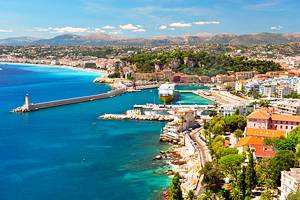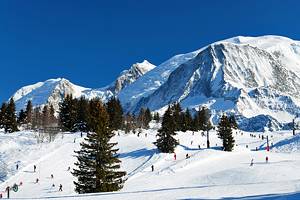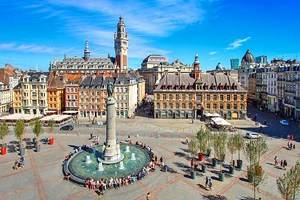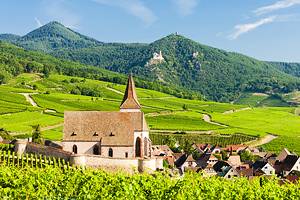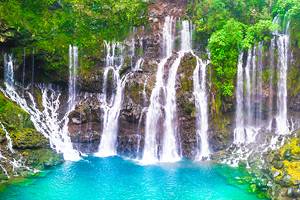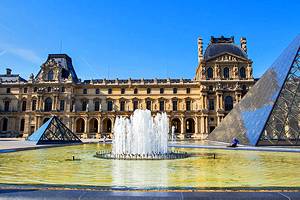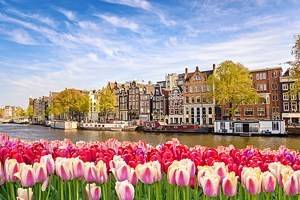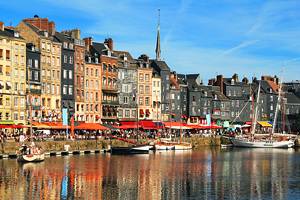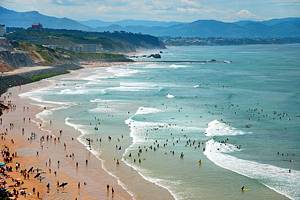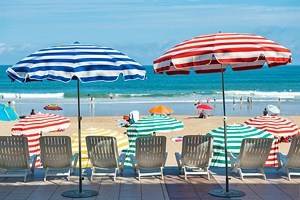Hiking Trails in France
Are you planning a vacation in the land of fromage and baguettes? Do you love the great outdoors? If you answered yes to both questions, then you are in for a treat!
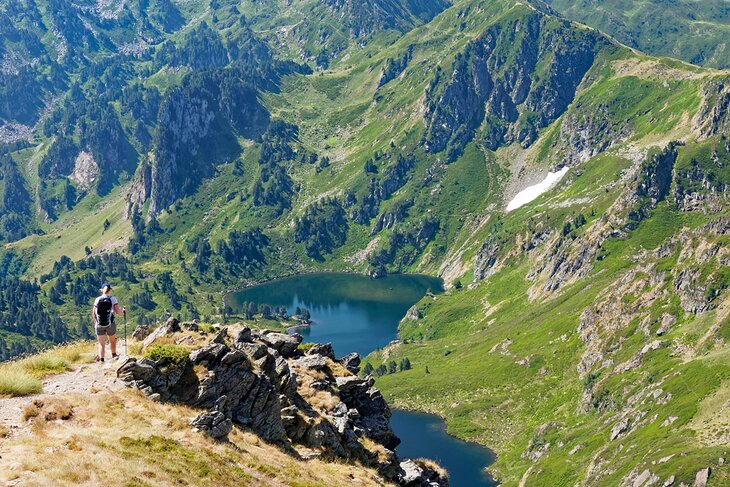
The variety of hiking trails in France is astounding, with excellent trail systems found in dozens of natural parks, and the landscapes are incredibly diverse. Each region has its own distinctive scenery, from the deep-blue Mediterranean Sea of the Côte d'Azur to the snowcapped Mont Blanc in Chamonix.
It's possible to focus an entire vacation around outdoorsy adventures and hiking. In that case, the French Alps, the Pyrenees, the Auvergne region, or the Luberon are the best destinations.
Perhaps you simply want to add a hike or two to your current vacation itinerary. That's definitely feasible, since hiking trails are found near most major tourist destinations in France.
Hiking your way through France, you will discover spectacular nature sites and idyllic rural areas as well as authentic regional cuisine. Hearty country meals reward you for a day spent on the trails. The more you hike, the more delicious local cheese (or fancy pastries and chocolates) that you can afford to eat!
From the mountains to the sea, France has some of the most awe-inspiring places to visit in Europe. Start planning your outdoor adventures with our list of the top hiking trails in France.
Tour du Mont Blanc

Ascending to the top of the legendary Mont Blanc is extremely strenuous and requires exceptional fitness, as well as a guide. However, there are moderate sections of Mont Blanc that can be approached as short hikes.
The Tour du Mont Blanc trail system covers 170 kilometers, with many different starting points, including Courmayeur, Les Houches, and Chamonix. Along the way, mountain refuges (mostly dormitory-style accommodations) allow you to rest and get refreshments. These rustic accommodations offer regional cuisine and cozy Alpine lodgings.
Le Chemin des Rognes is a challenging mountainous route that begins in Bellevue and ends in Baraque des Rognes and takes three to four hours. Your effort will be rewarded with incredible views of the Chamonix Valley, the Aiguille du Midi, and the Aravis Mountain Range.
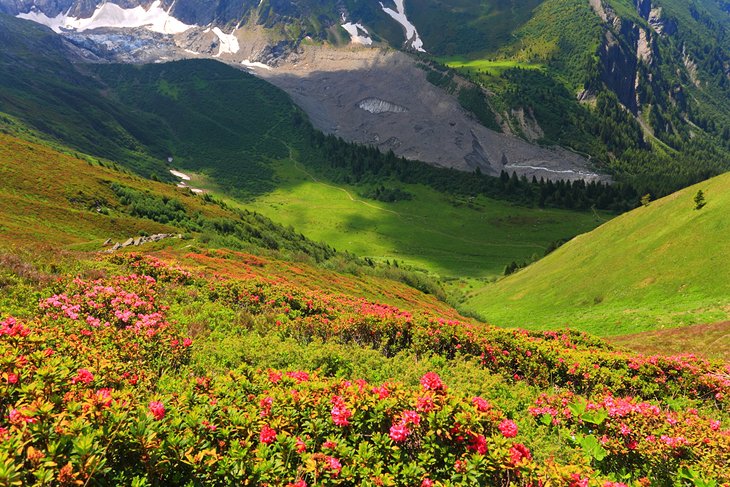
The 10-kilometer Glacier d'Argentière loop hike dazzles you with picturesque scenery in the Chamonix Valley and sublime panoramas, after a 980-meter ascent. The hike is accessible from Les Grands Montets cable car.
Along the Glacier d'Argentière route, at an altitude of 2,032 meters, you'll find the Chalet Refuge de Lognan with half-board accommodations; and at 2,771 meters, the Refuge d'Argentière dormitory-style lodge.
In the Valle d'Aosta, the starting point of a two-hour hike is accessible from the Courmayeur funicular. This relatively easy hike ends in Courmayeur at La Maison Vieille, a rustic mountain refuge in a sunny valley.
La Maison Vieille offers shared dormitory rooms with breakfast, half-board, and dinner options. The refuge's restaurant serves traditional cuisine of the region (roast meat, vegetables, polenta), as well as sandwiches, spaghetti, lasagna, and other hearty dishes.
Gentle Nature Walk at the Cirque de Gavarnie

The Cirque de Gavarnie ranks as one of the top attractions of the French Pyrenees region. This UNESCO World Heritage Site is a highlight of the Parc National des Pyrénées (National Park of the Pyrenees Mountains).
Accessible to most visitors, the Cirque de Gavarnie nature walk is an easy loop trail that begins in the tiny village of Gavarnie. The trailhead is found past the Hôtel du Cirque and horse stables, and then follows the stream up to the head of the valley. The gentle, circular walk takes about one hour from start to finish.
With almost no incline, this trail lends itself to more of a stroll than a hike. In the distance, glacier-formed limestone rock walls soar 1,700 meters and enclose the small valley, creating the impression of a cathedral in nature.
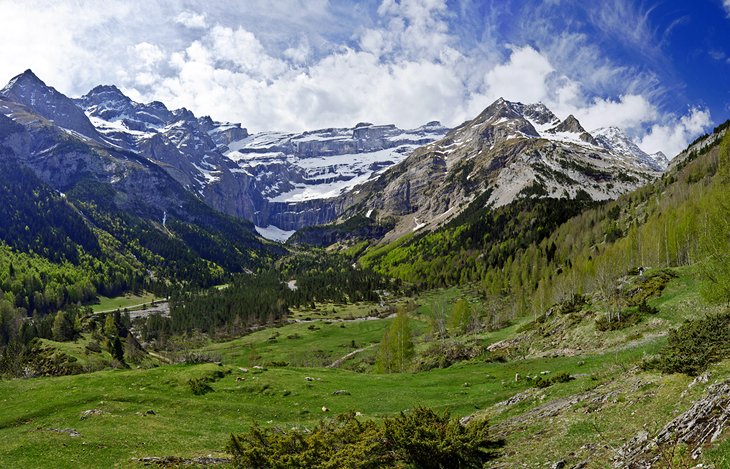
Adding to the theatrical splendor are numerous rushing waterfalls that tumble from the snow-dusted summits (over 3,000 meters in altitude). The most impressive is La Grande Cascade, which drops for over 400 meters, making it the tallest waterfall in France.
The park has no modern developments, only small rustic chalets, pastures of grazing goats, and little footbridges that cross the gurgling mountain stream. Chirping birds complete the tranquil, meditative experience.
The Legendary GR20 Trail in Corsica
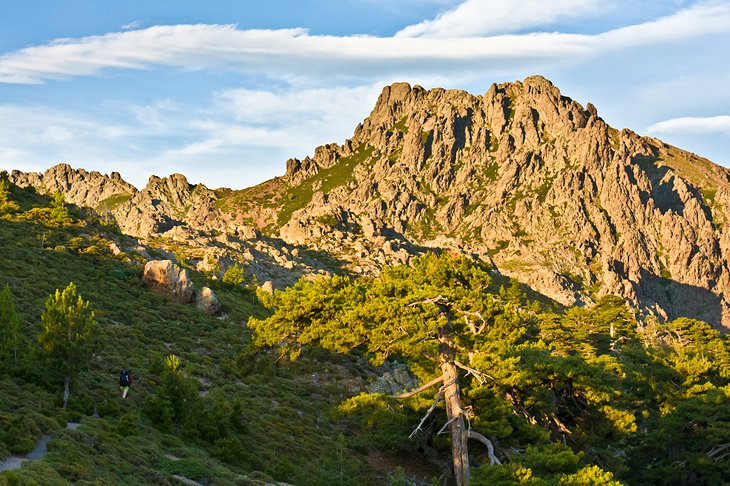
The most challenging hike on this list is Corsica's GR20 Trail, one of the toughest long-distance trails in Europe. With its dramatic gorges and rocky hillsides, this legendary trail is popular with advanced hikers.
The sun-drenched path crosses the entire island of Corsica from north to south, winding through a landscape of rugged hillsides and wild gorges.
Besides being a test of physical endurance, the trail traverses remote terrain, which adds an element of psychological challenge. Only those who are sufficiently conditioned and well-trained should attempt the hike.
Hikes to the Most Beautiful Villages in the Luberon Mountains
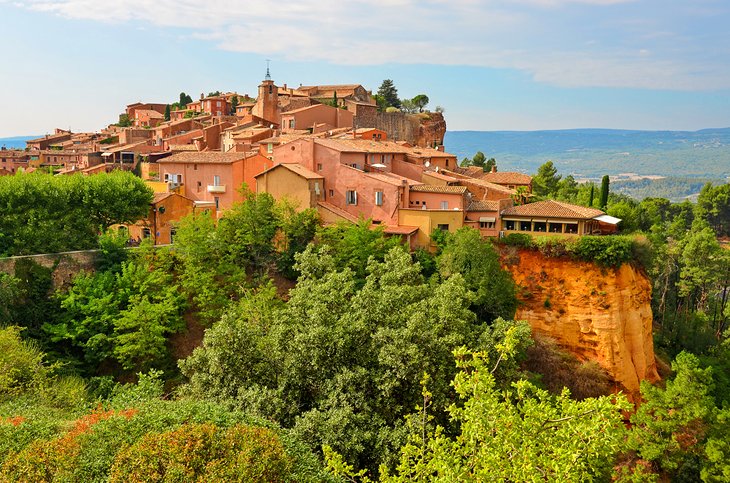
If you've ever dreamed of vacationing in the Provençal countryside, you might be imagining the Luberon region. This alluring corner of Provence is blanketed with orchards, farmlands, vineyards, and forests. Medieval villages crown the hilltops, vibrant lavender fields sweep across sunny valleys, and olive groves produce a key ingredient in the local cuisine.
The entire Luberon region is protected as a nature reserve, the UNESCO-listed Parc Naturel Régional du Lubéron. For nature lovers, hiking is one of the highlights of visiting this region. The Luberon hiking trails connect various nearby villages, which are within walking distance.
The 10-kilometer hike from Gordes to Roussillon offers amazing views. The hike begins in the medieval hilltop village of Gordes and continues along scenic roads until reaching the striking village perché (perched village) of Roussillon, which stands on an ochre cliff overlooking a stunning landscape.
A wonderful all-day hike is from Roussillon to Lourmarin, one of France's Plus Beaux Villages. This 25-kilometer trail travels through country roads and footpaths until reaching Lourmarin, nestled in a protected valley of olive groves and orchards at the base of the Luberon Mountains.
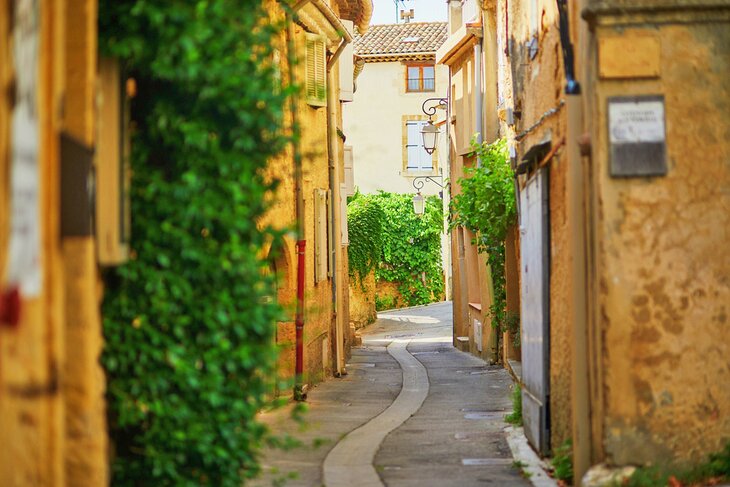
A quaint country village with narrow pedestrian streets and blue-shuttered old stone houses, Lourmarin has a quintessentially Provençal ambience. On Friday mornings, a traditional open-air market takes place in the center of town. Local farmers and vendors set up stalls to sell fresh fruit, vegetables, cheese, bread, cheese, fish, meat, olives, jams, and other culinary specialties.
The village of Lourmarin is the perfect place to end up after a long hike because of its inviting restaurants, sidewalk cafés, and boutiques. Lourmarin also has several charming hotels.
The villages of Gordes, Roussillon, and Lourmarin are listed as Plus Beaux Villages de France. The Luberon region also has other Plus Beaux Villages: Ménerbes, which has been famous ever since it was featured in the novel A Year in Provence by Peter Mayle in 1989; and Ansouis, a tiny hilltop village with an ancient fortified château and amazing views of the countryside.
Discovering Picturesque Alsatian Villages by Foot
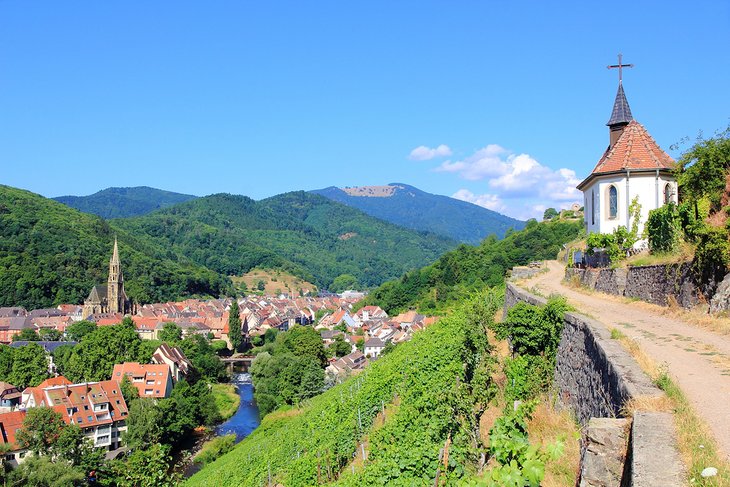
The picture-perfect countryside of Alsace invites recreational ambles. Your hikes will take you through meandering country lanes that traverse storybook hamlets tucked in between vineyards, woodlands, verdant valleys, and vine-covered rolling hills.
The undulating landscape is dotted with medieval towns, fairy-tale villages, and adorable hamlets. This area is nestled in the foothills of the Vosges Mountains near the Parc Naturel Régional des Vosges du Nord, where the hikes connect historic castles.
For a hiking tour of quaint Alsatian towns, try the moderate eight-kilometer hike from Bergheim to Riquewihr. Surrounded by medieval town walls, Bergheim is appreciated for its lovely pedestrian lanes and flower-bedecked buildings.
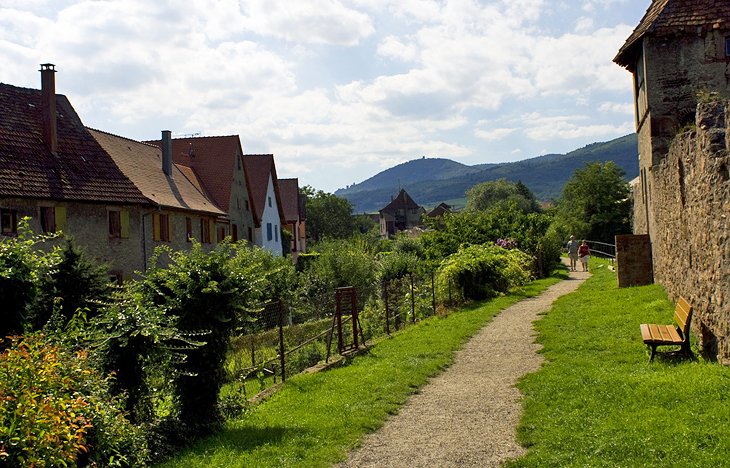
From Bergheim, walking paths lead through a bucolic landscape towards Riquewihr. You will notice the church steeple of Riquewihr upon approaching this storybook village, listed as one of the Plus Beaux Villages de France.
A pleasant, short walk (of three kilometers) continues from Riquewihr to Mittelwihr, a tiny hamlet hidden in a patchwork of almond orchards and vine-covered fields at the foot of forested rolling hills. There are many hiking trails around the village of Mittelwihr.
You can add another hike to extend your itinerary from Mittelwihr to Kaysersberg. Six kilometers away on a country road, Kaysersberg exudes quintessential Alsatian style. Colorful potted flowers decorate old burghers' mansions and half-timbered houses. The captivating medieval ambience reveals the town's heritage as a 13th-century Free Imperial City.
The Nietzsche Path from Eze Village to Eze Beach
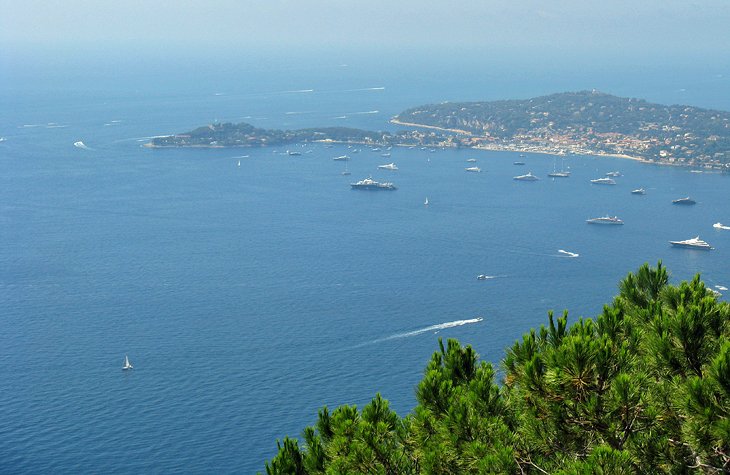
Get ready to be awestruck by magnificent glimpses of the Mediterranean coastline...and to challenge yourself a bit along the way. For breathtaking seaside views, no other hike on this list compares to the Nietzsche Path. This steep trail follows in the footsteps of the famous German philosopher.
The path begins in the medieval hilltop village of Eze, known as the "nid d'aigle" (eagle's nest) because it is perched 400 meters above the sea. Eze is considered one of the highlights of the French Riviera.
As you wind through paths shaded by oaks and olive trees, you'll see the mesmerizing azure waters and the distinctive Saint-Jean Cap Ferrat peninsula in the distance. On a clear day, the coastal views extend all the way to Italy and the island of Corsica.
Although the scenery is dreamy, this hike is difficult. It takes about 1.5 hours to end up at Eze-sur-Mer, the seaside section of town which has a beach (great for swimming and sailing), cafés, restaurants, hotels, and a train station. The Nietzsche Path may be approached in the reverse (convenient if arriving by train) by hiking up from Eze-sur-Mer to the hilltop village of Eze.
Eze is one of the most popular day trips from Nice, which is less than 20 kilometers away. It's also worth spending time in the gorgeous seaside city of Nice, which has a lovely beachfront promenade, an atmospheric Old Town, and superb art museums.
Route Napoléon on the Camino de Santiago
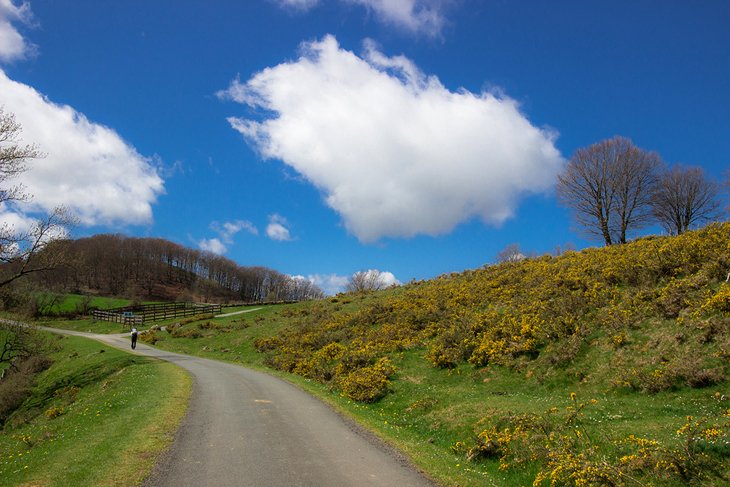
The Camino de Santiago was the most important medieval pilgrimage route in Europe. Also known as the Chemin de Compostelle or the Way of Saint James, the Camino de Santiago is still popular among modern-day pilgrims and hikers.
One of the most challenging sections of the Camino de Santiago is the Route Napoléon. This advanced hike begins in Saint-Jean-Pied-de-Port, a characteristic Basque town with cobblestone streets and red-shuttered houses. The 25-kilometer route takes hikers through the Pyrenees Mountains, ascending around 700 meters in altitude. Parts of the trail have a very steep grade.
Along the way, little plaques featuring scallop shells (the symbol of Saint James' pilgrims) confirm that this is the Camino de Santiago. The route ends in Spain at Roncesvalles, an ancient village with a historic pilgrims' hostel and convent.
Some travelers continue on the Camino de Santiago trail all the way until reaching the pilgrimage destination of Santiago de Compostela in Spain.
Hikes through Forests and Farmlands in the Béarn Mountains
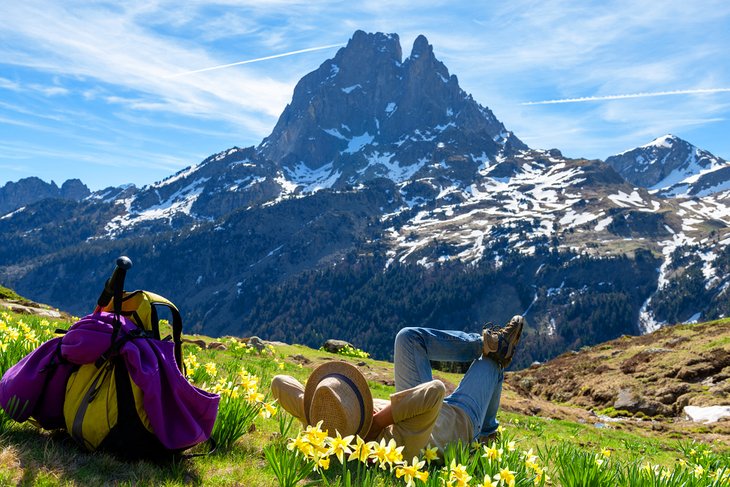
The historic Béarn region is one of the top attractions of the French Pyrenees, located about 40 kilometers from Lourdes. This idyllic rural area features an unspoiled landscape of rolling hills and mountains.
Just outside of Jurançon, a narrow two-lane country road takes travelers up to the Montagnes Béarnaises (Béarn Mountains), a lush mountainous area of deeply wooded groves, ravines, crystal-clear rivers, and rushing waterfalls. The forests are interspersed with small farms and pastures where goats graze. Beautiful hiking trails wind around through the forests and valleys.
Coastal Walk in Bassin d'Arcachon or on the Dune du Pilat
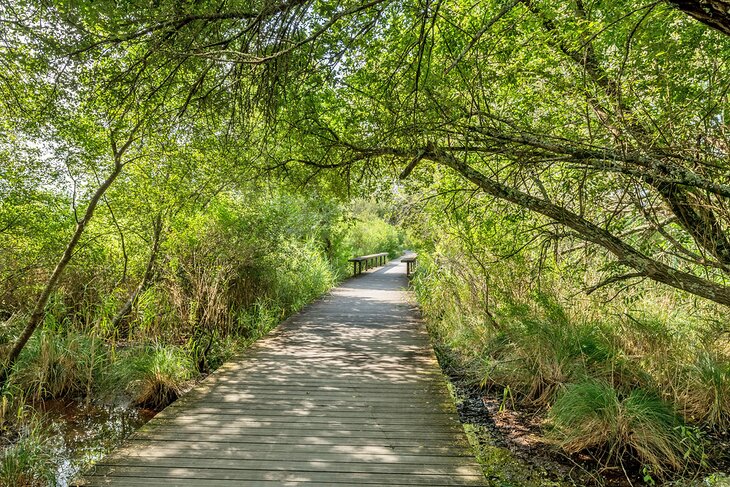
A favorite summertime vacation destination, the Bassin d'Arcachon has seven kilometers of sandy beaches. The Bassin of Arcachon has a 400-hectare marshland nature reserve (the Réserve Naturelle Nationale des Prés Salés d'Arès-Lège) with oyster ports, fishing piers, and the largest marina on the Atlantic Ocean.
Enjoy a refreshing coastal walk beginning at Arès in the marshland nature reserve. There is a 12-kilometer loop trail through the salt marshes, which is fabulous for bird-watching.
Another option for walkers, the Dune du Pilat (south of Arcachon) offers serene natural beauty and an exhilarating seaside environment. Because of the wind and tides, the 2.7-kilometer-long sandbank is always changing shape.
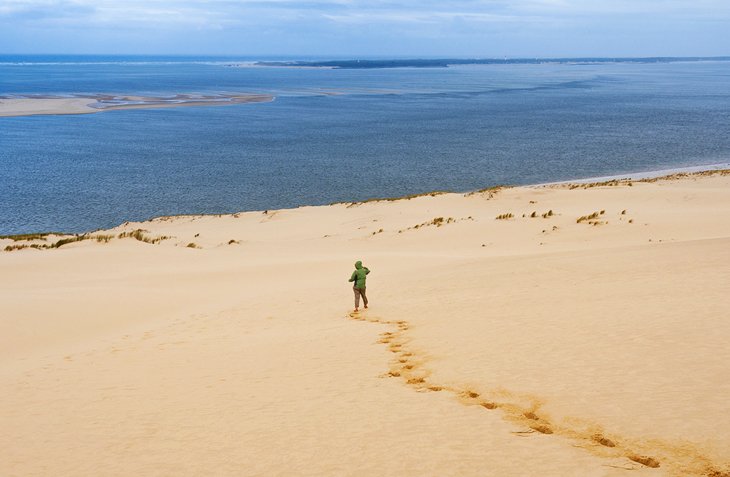
You can walk along the top of the Dune du Pilat to admire the scenery. A staircase provides easy access to the top of the 100-meter-high dune. From this height, the sweeping views of the bay and ocean are spectacular.
Bird-watchers will be able to spot native species like the Kentish plover. Other things to do include paragliding, sailing, and surfing.
The Bassin d'Arcachon is in southwest France about 72 kilometers from Bordeaux.
Somme Battlefields Remembrance Circuit
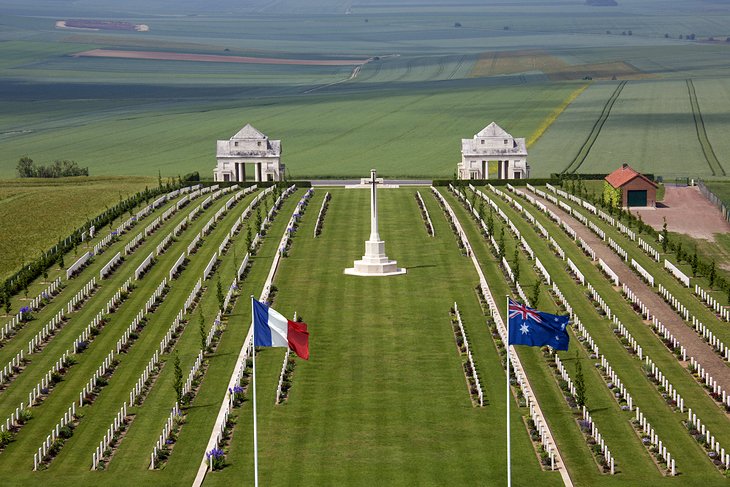
A meaningful World War I history lesson awaits you at the Somme Battlefields in Nord-Pas-de-Calais. The Somme Valley's rural landscape was the site of the Western Front, where the devastating Battle of the Somme took place in 1916.
You can hike the Remembrance Trail to see the battlefield sites, where today you will find World War One cemeteries, memorials, and museums. The Remembrance Trail is a marked itinerary between the towns of Péronne and Albert, with 48 different walking paths to explore.
The tourism offices in Péronne, Albert, and Corbie offer information about hiking the Remembrance Circuit. Guided tours are available; you can sign up at the tourist offices and museums.
If visiting in late spring, you will be awestruck by the gorgeous spectacle of bright red poppies blooming in the fields. Fittingly, the red poppy is considered an emblem of sacrifice, as well as remembrance.
Blanc-Martel Trail in the Gorges du Verdon
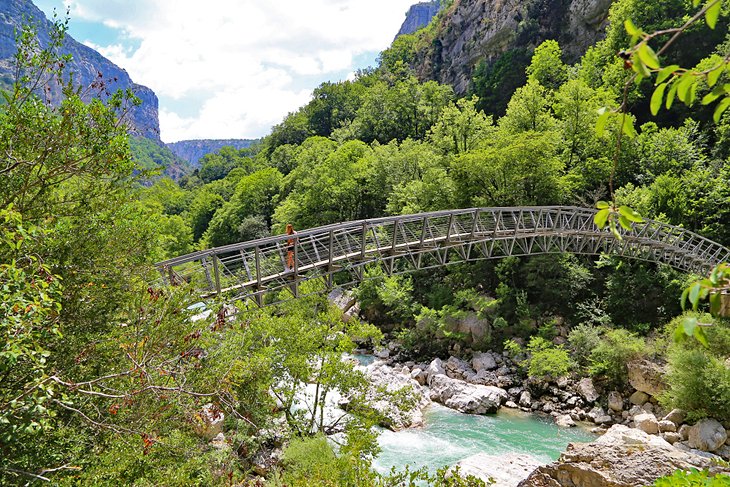
The Blanc-Martel Trail (Sentier Blanc-Martel) offers a glimpse of the Gorges du Verdon's breathtaking natural environment. Suitable for physically fit hikers, the 16-kilometer trail traverses the dramatic limestone canyon with a steep descent into the valley, crossing through tunnels and passing by swimming spots.
It takes about six or seven hours to complete from start to finish (one way). Because of the length (32 kilometers round-trip) and level of difficulty, trying to complete the entire trail may not be the best idea unless transportation is arranged for a pick-up at the end of the trail.
Tips: Be sure to wear sturdy walking shoes with treads to handle the terrain. Take along a flashlight for the tunnels and bring plenty of water because it can get very hot, especially during the summertime. Wearing a swimsuit comes in handy if you want to take a dip in one of the natural pools along the way.
Chemin des Maquisards in Auvergne
Discover the natural beauty and fascinating history of a small rural community in the Auvergne region. The town of Saint-Genès-Champespe was a hub for French Resistance fighters during World War II.
The Chemin des Maquisards follows in the footsteps of Resistance fighters, known as maquisards, who used guerrilla warfare techniques to hunt down Nazis. This 8-kilometer loop hike takes you on a remembrance tour of the French Resistance events that took place here between May 15th and June 15th in 1944. The trail features panels that explain the history.


